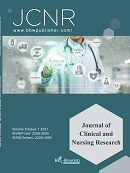Abstract
Objective: To explore the target and mechanism of Astragalus membranaceus, poria, salvia miltiorrhiza and semen leiocarpa in the treatment of heart failure by network pharmacology. Methods: The active components of traditional Chinese medicine and the target of heart failure were screened by multi-platform, and the standard gene was transformed by Uniprot. CytoCasp 3.6.1 was used to draw the network diagram of traditional Chinese medicine - component - target. Go and KEGG analysis were performed by Metascape. Results: A total of 36 predictive target sites of Radix Astragalus, Fuling poria, Salvia miltiorrhiza and Draba nemorosa were screened for treatment of heart failure, mainly involving nerve and factor pathways: ADRB2, ADRA1B and AChE. Cancer pathway: TP53, TNF; Pathways of inflammation: IL1B, PTSG2, PTSG1; Sex hormone pathway: ESR1, AR, PGR; Others: SCN5A, HIF1A, etc. The results of GO and KEGG enrichment suggested that the treatment of heart failure with the top four drugs involved cancer pathway, calcium signaling pathway, HIF-1 signaling pathway, and involved in blood circulation, cell proliferation and other processes. Conclusion: This study combines the pharmacological studies of Chinese medicine and western medicine to reveal the mechanism of multi-target and multi-channel regulation of body balance in Chinese medicine treatment.
